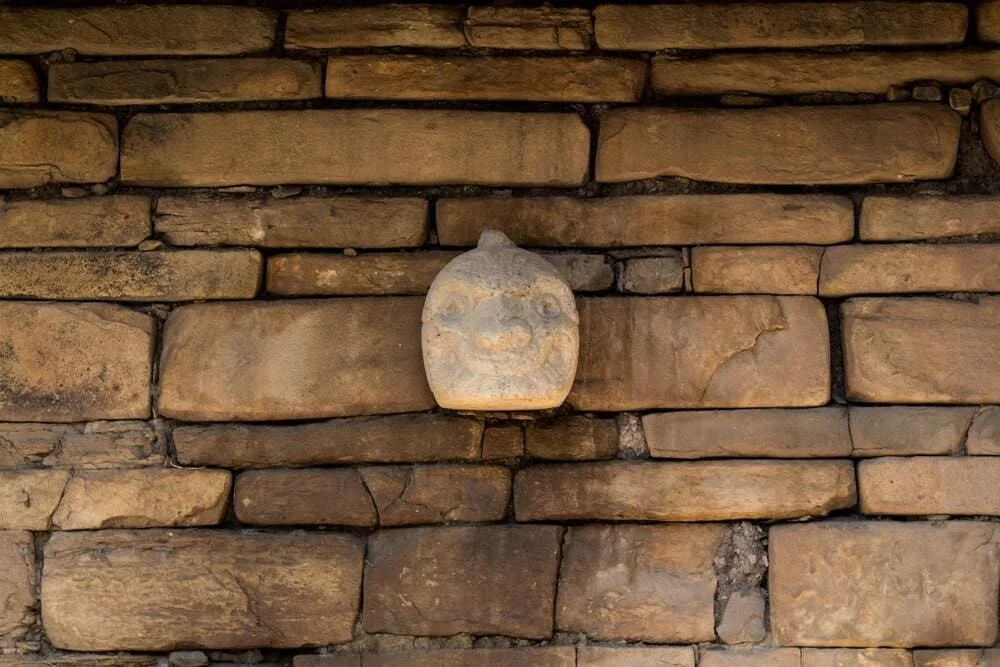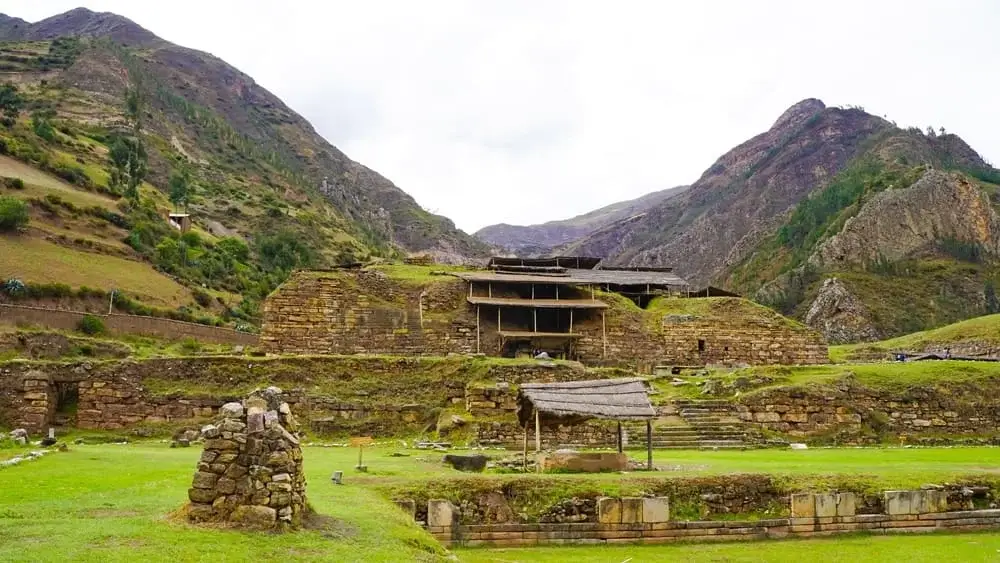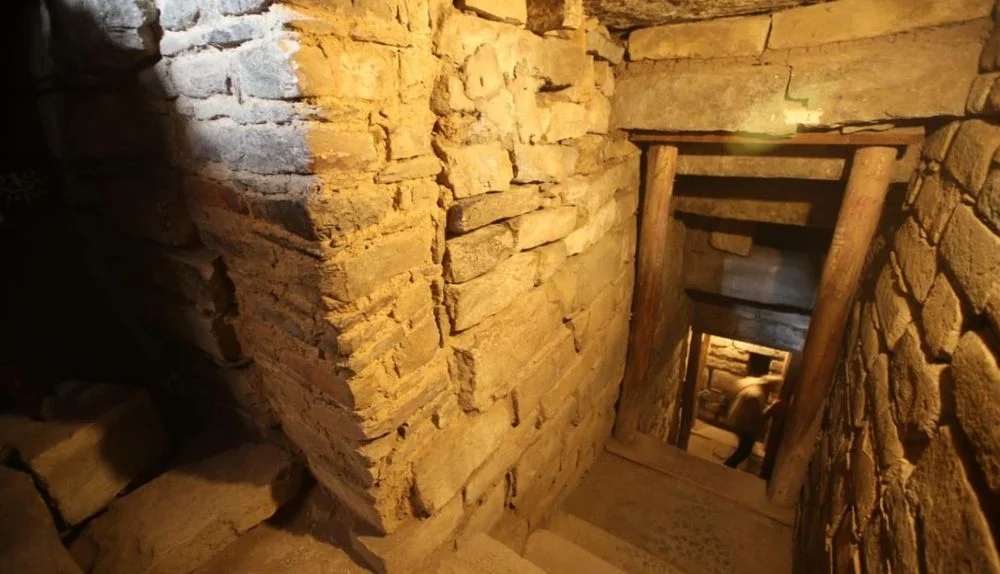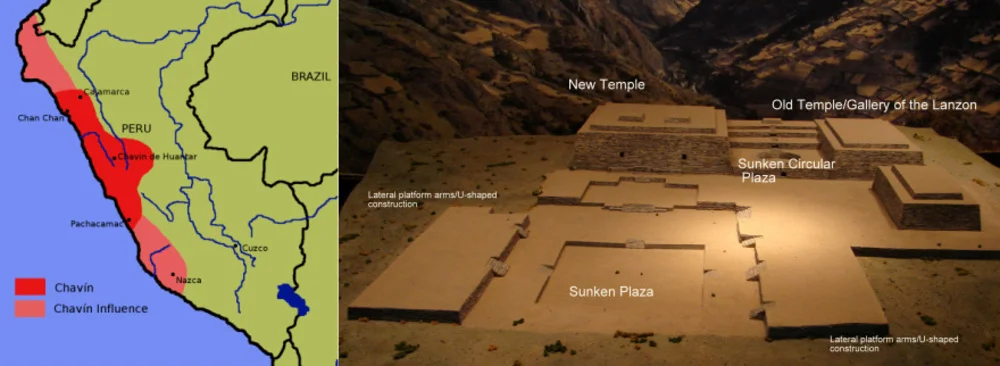Hidden deep in the Áncash region of Peru, surrounded by snow-capped peaks and winding mountain roads, lies one of the most mysterious archaeological treasures in South America: Chavín de Huántar.
This ancient ceremonial center recognized as a UNESCO World Heritage Site was once the spiritual heart of the Chavín culture (1200–200 BC). It played a vital role in shaping the religious, artistic, and architectural traditions that influenced later civilizations, including the Incas.
Visiting Chavín de Huántar is more than a day trip it’s a journey into the origins of Peru’s cultural identity, where monumental stone plazas, labyrinthine tunnels, and symbolic art reveal a society that connected deeply with nature, spirituality, and cosmic forces.
Whether you’re a history enthusiast, a family exploring Peru, or an adventure seeker based in Huaraz, Chavín offers one of the most unique cultural experiences in the Andes.
Where is Chavín de Huántar Located?
Chavín de Huántar is located in the province of Huari, Áncash region, about 110 km southeast of Huaraz and 270 km north of Lima. Nestled at an altitude of 3,180 meters (10,430 ft), the site sits at the meeting point of the Cordillera Blanca and Cordillera Huayhuash mountain ranges.
Quick facts:
- Region: Áncash, northern Peru
- Nearest city: Huaraz (3–4 hours by road)
- UNESCO World Heritage Site since 1985
Its remote location makes reaching it part of the adventure, rewarding travelers with unforgettable mountain scenery along the way.
Why is Chavín de Huántar Important?
Chavín de Huántar was not just another archaeological site it was the religious and cultural center of its time.
- It served as a pilgrimage hub for people across the Andes.
- Its architecture introduced sunken plazas and ceremonial platforms, later seen in other Peruvian cultures.
- Art from Chavín de Huántar features powerful animal symbols jaguars, condors, snakes representing transformation and spiritual power.
- Its influence stretched for centuries, shaping Andean cosmology and religious practices.
“Chavín de Huántar is often considered the birthplace of Andean religion, a place where art, architecture, and spirituality merged.” – UNESCO
For travelers, exploring Chavín offers a direct link to Peru’s pre-Inca legacy long before Machu Picchu.
The History of the Chavín Culture
The Chavín civilization (1200–200 BC) thrived for nearly 700 years. Although not a military empire, it spread influence through religion, trade, and ideology.
Key features of the Chavín culture:
- Spiritual rituals: Shamans used the hallucinogenic San Pedro cactus in ceremonies.
- Animal symbolism: Belief in transformation into jaguars, condors, or snakes.
- Architectural innovation: Sunken courtyards, advanced drainage systems, and intricate stonework.
- Art: Ceramics, sculptures, and textiles showcasing hybrid creatures and cosmic beings.
Instead of conquest, Chavín expanded through shared belief systems that united diverse Andean communities under one spiritual center.
Exploring the Chavín de Huántar Site
Walking through the site is like stepping into another world. Here are its most iconic features:
🔹 The Lanzón Monolith
A 4.5-meter granite sculpture hidden deep inside the temple, the Lanzón represents a fanged deity. Pilgrims may have accessed it in darkness, guided only by torchlight an awe-inspiring spiritual experience.
🔹 Underground Galleries
Mysterious passageways snake beneath the temples. Built with precise acoustics, some tunnels mimic animal roars when wind passes through. These galleries created sensory experiences meant to reinforce Chavín’s spiritual power.
🔹 The Sunken Plazas
The Circular and Rectangular Plazas were ceremonial gathering spaces where rituals involving sound, water, and possibly offerings took place.
🔹 Iconography
Stone carvings throughout the site show jaguars, serpents, and condors symbols of transformation and connection between the earthly and divine realms.
Travel Tip: Hire a guide or join an organized tour to fully appreciate the symbolism and architectural genius behind Chavín de Huántar.
How to Get to Chavín de Huántar
Getting to Chavín de Huántar is part of the adventure, offering breathtaking mountain views.
From Lima to Huaraz
- By bus: 8–10 hours, with companies like Cruz del Sur, Movil Tours, or Oltursa.
- By car: Roads are well maintained, but mountain driving requires caution.
From Huaraz to Chavín de Huántar
- Organized tour: Most comfortable option, including transport and guide. Departures: 7–8 am, return late afternoon.
- Public bus: 3–4 hours, departing from Huaraz terminal. Budget-friendly but less flexible.
- Taxi or rental car: Ideal for independence, with scenic stops.
Highlight: The route passes through the Cahuish Tunnel at 4,516 meters one of the highest tunnels in the world.
Entrance Fees and Tours
Here’s a quick breakdown of costs:
| Experience | Approx. Price (Soles) | Details |
|---|---|---|
| Entrance fee | 15–20 | Per person |
| Guided tour from Huaraz | 80–120 | Includes transport, guide, sometimes lunch |
| Public bus (one way) | 25+ | From Huaraz to Chavín town |
Recommendation: Choose a tour from Huaraz for the best balance of comfort, safety, and local expertise.
What to Bring to Chavín de Huántar
Because of the high-altitude climate, packing smart makes the visit more enjoyable.
- Light clothing + jacket (sunny days, cool afternoons)
- Sunscreen + sunglasses (strong UV at altitude)
- Reusable water bottle
- Snacks (limited food options in town)
- Cash (ATMs not always available)
Tip: Layers are essential. Expect warm sun during the day but chilly evenings.
Best Time to Visit Chavín de Huántar
- Dry season (May–September): Best weather, clear skies, easier transport.
- Rainy season (October–April): Lush scenery but heavier rains, possible road delays.
For families, the dry season is ideal. For adventure travelers, the rainy season offers fewer crowds and a greener landscape.
Practical Travel Tips for Visitors
- Altitude: At 3,180 meters, take it slow, drink water, and acclimate in Huaraz first.
- Facilities: Restaurants are basic; overnight stays possible in Chavín town.
- Families: The site is walkable but uneven wear sturdy shoes.
Make Chavín de Huántar part of a broader cultural journey through Áncash. Pair it with hikes in Huascarán National Park or a visit to Laguna 69.
Combine Chavín with Other Experiences in Áncash
Don’t miss these nearby highlights:
- Huascarán National Park: UNESCO-listed, home to Peru’s highest peak.
- Laguna 69 Trek: One of the most stunning day hikes in Peru.
- Huaraz: Bustling Andean city with local markets, culture, and mountain views.
At Andean Travel Experience, we specialize in customized tours that bring Peru’s ancient heritage to life. Our expert guides ensure you don’t just see Chavín de Huántar you experience its mystery and significance.
Chavín de Huántar is more than an archaeological site it’s a portal into the spiritual heart of the Andes. Its plazas, carvings, and hidden galleries whisper stories of a civilization that shaped Peru’s cultural identity long before the Incas.
For travelers seeking more than just landscapes, Chavín offers a chance to connect with ancient wisdom, awe-inspiring art, and the enduring power of belief.
Don’t just read about it. Come walk through history with Andean Travel Experience your gateway to Chavín de Huántar and beyond.




